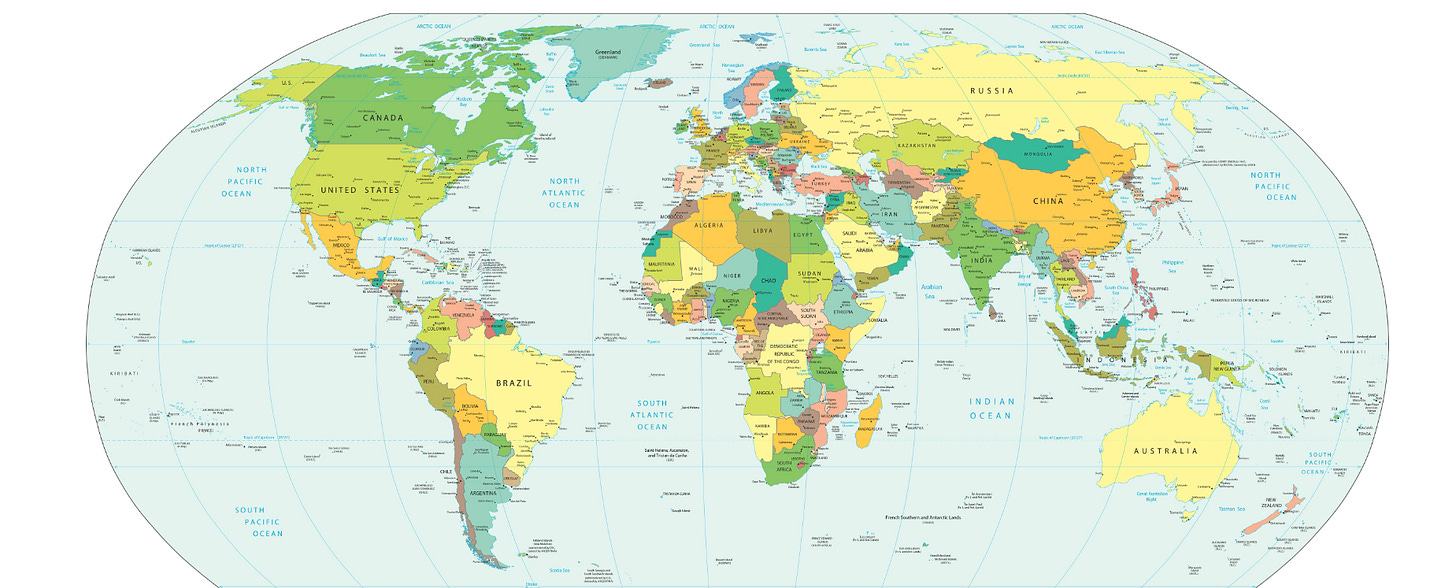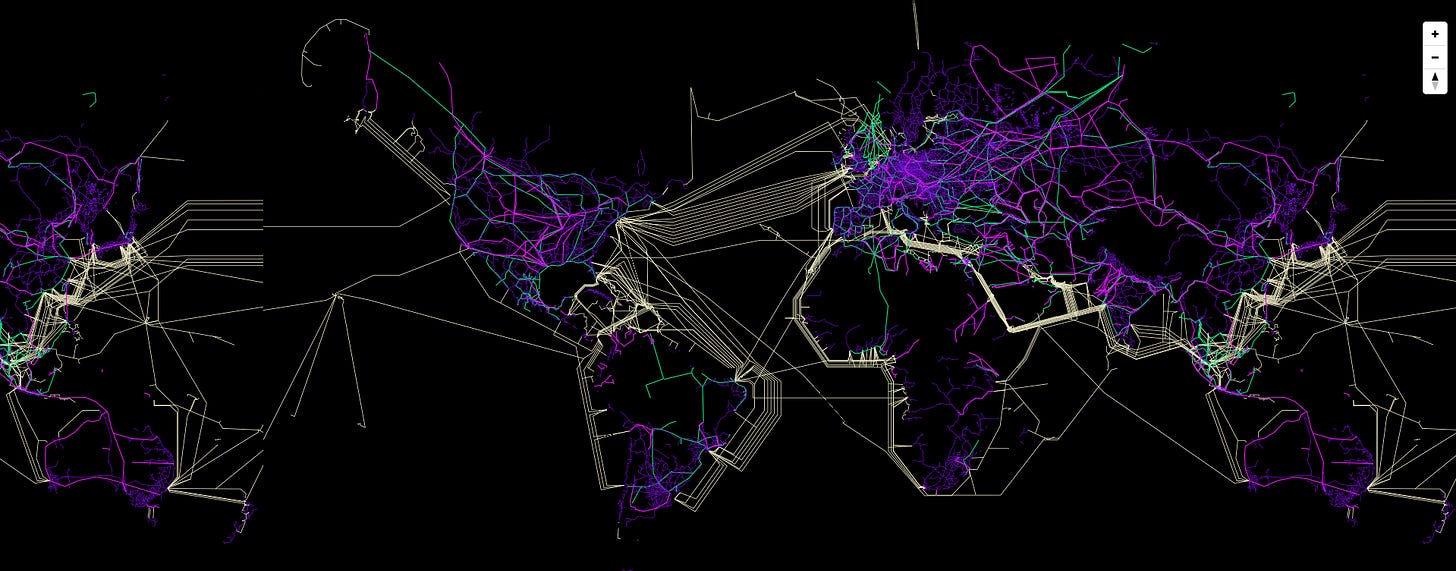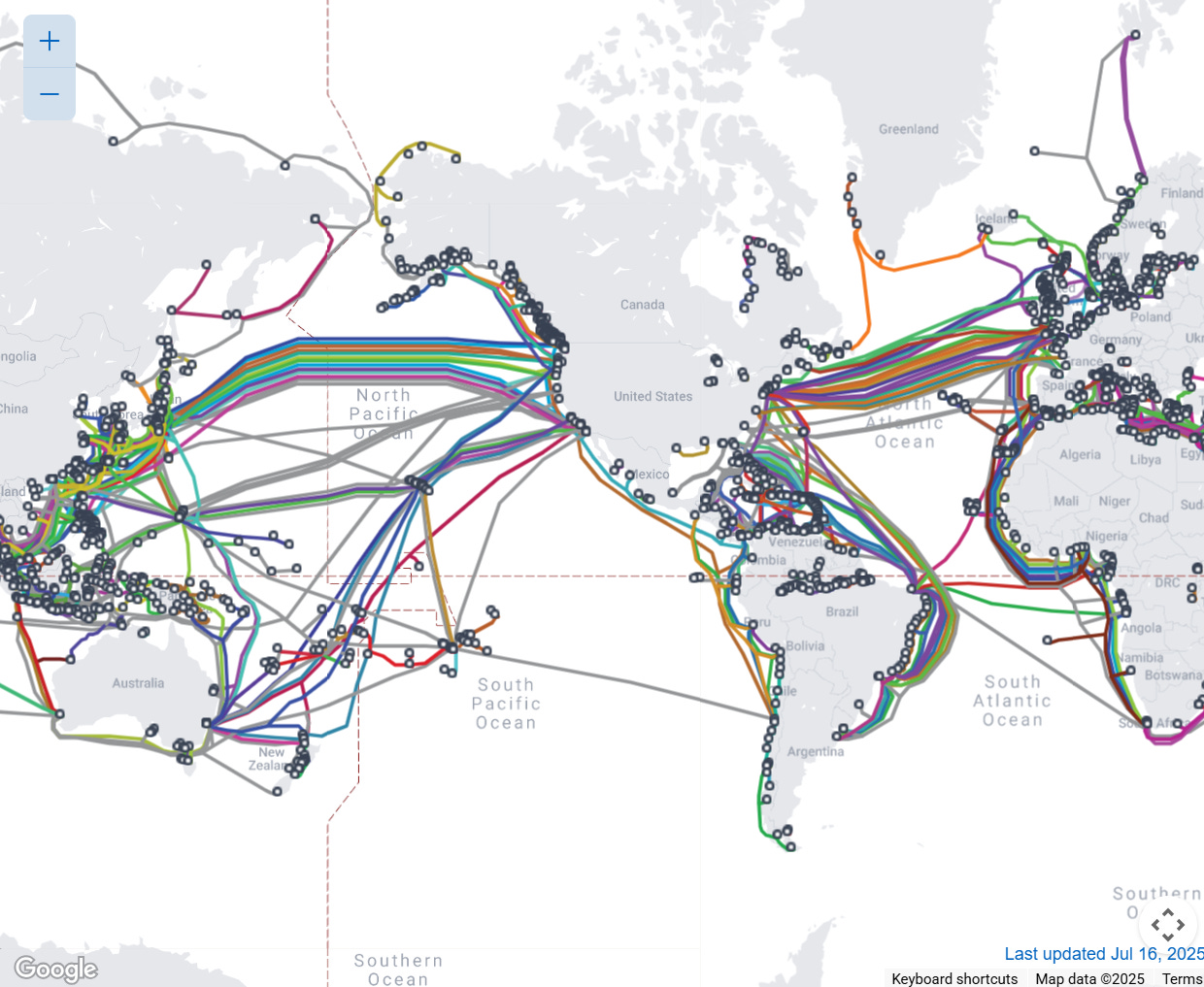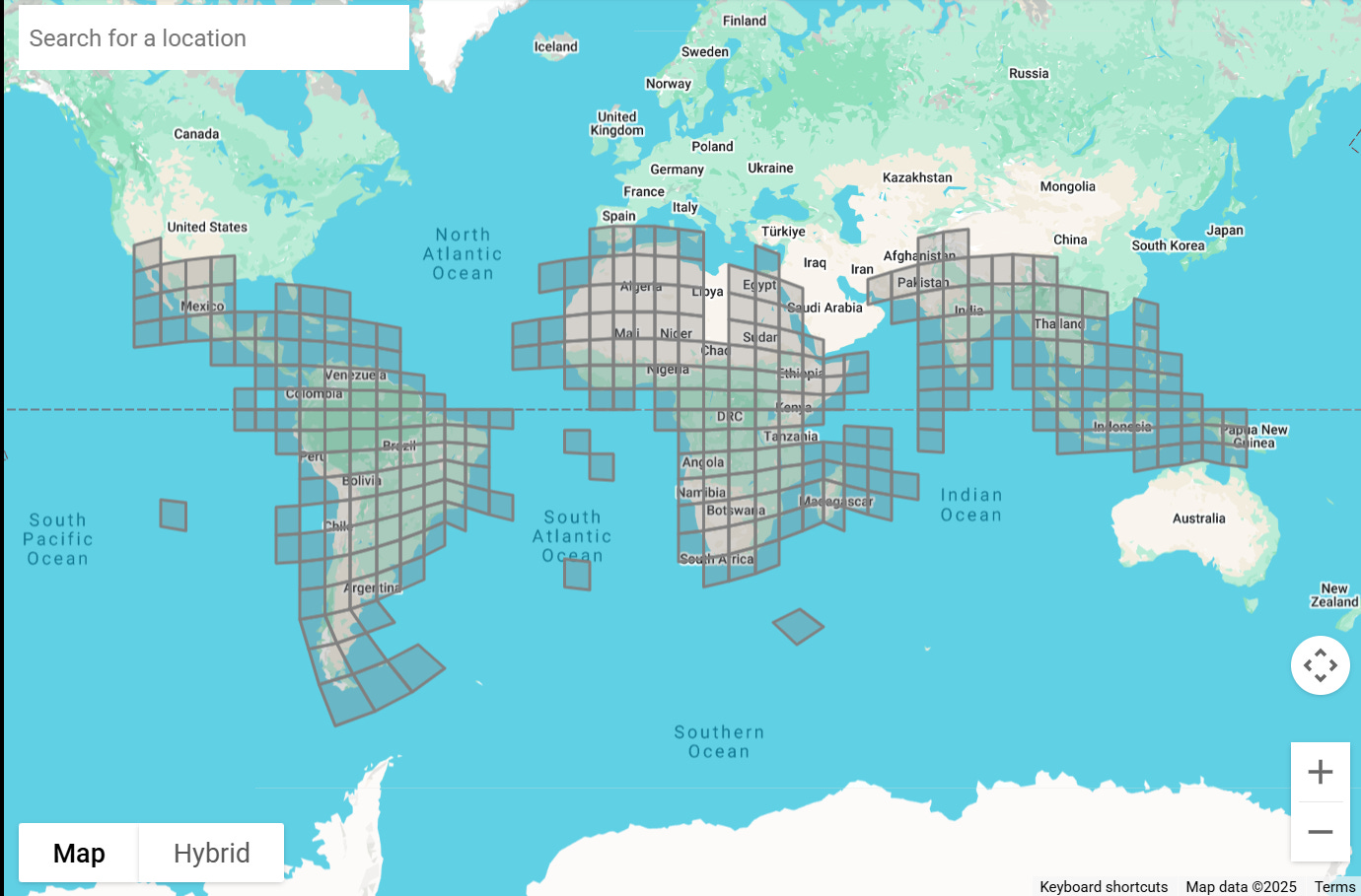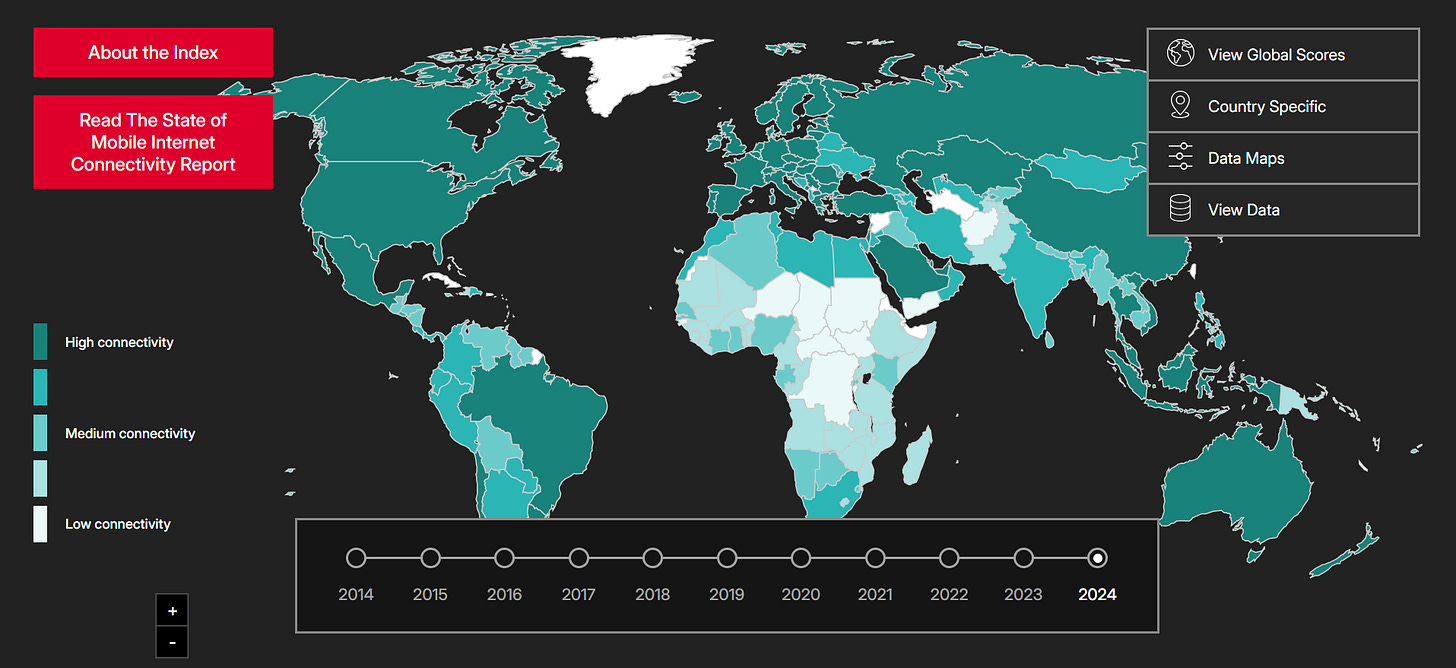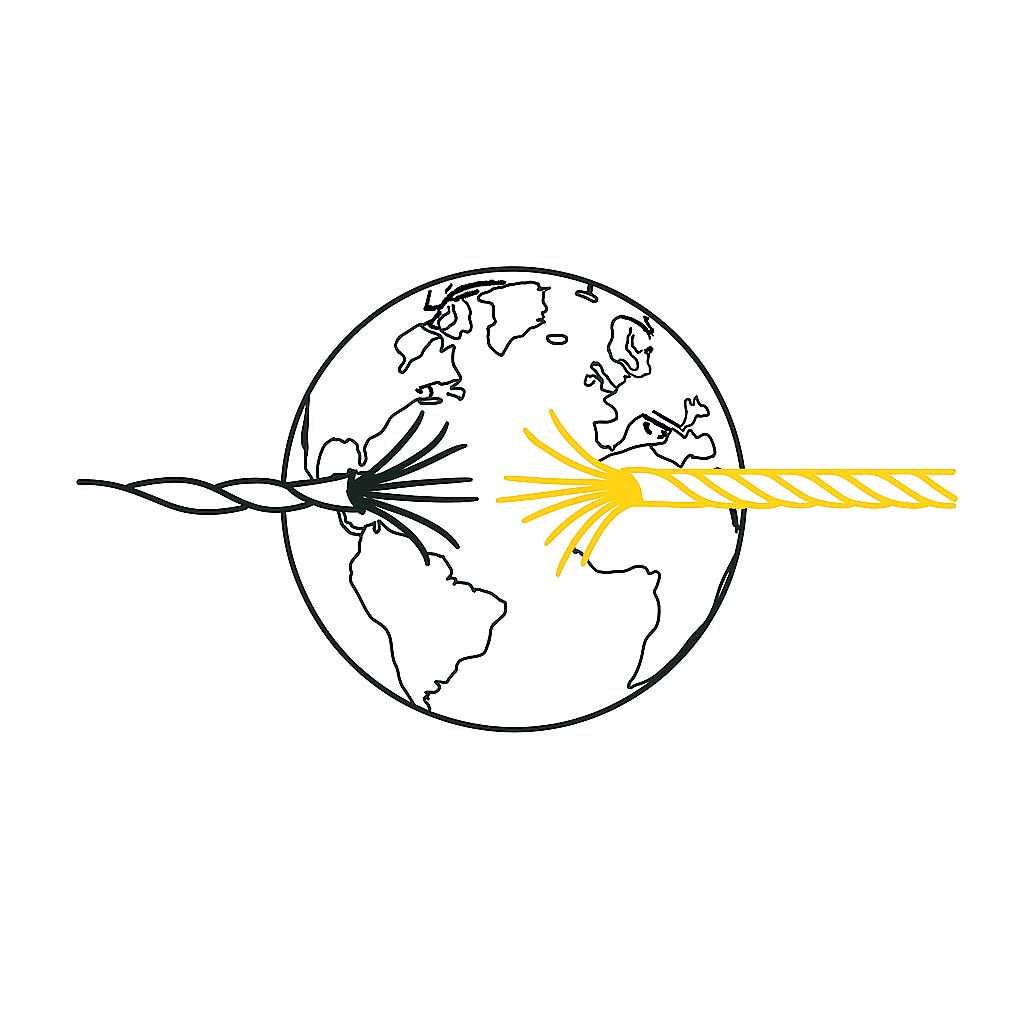Flow, Not Friction
Our strategies can’t afford to stay static when services, data, capital, and ideas cross borders every second.
Seeing the world as static is not without risk in 2025.
The way we work and the objectives we set are often shaped by company or country culture. Anchored to the status quo, we tend default to small, safe gains.
And yet, there’s a direct link between seeing more, making more meaning, and doing more. With new smart tools, technologies, and sharper strategic questions, we can see further, decide smarter, and move beyond the status quo.
Let’s do that now.
Lines on a Map
Borders define much of how the world operates in 2025. Tariffs are added and removed (only to be added again) on shipped goods. Conflict centres on redrawing lines. Policy changes slow the movement of people and products.
It makes sense that geography still defines decisions. We tend to default to the political map: 193 nation states making up fixed lines.
Screenshot from Worldometer’s World Map (https://www.worldometers.info/world-map/), captured August 2025.
This only shows part of the picture. New maps are emerging all the time, yet they often remain out of sight.
The Maps that Reveal the Bigger Picture
Maps of flows, rather than borders, show how the world really works in 2025. They reveal how goods, data, capital, and people cross borders every second. Leaders who learn to read these maps gain an edge that others miss.
Some of the most powerful, freely available tools include:
The Connectivity Atlas – This interactive map reveals the global networks of roads, railways, pipelines, and communication cables that physically connect cities and countries. By visualising infrastructure flows rather than fixed political borders, it helps us see the world as a living, interlinked system where commerce, energy, and information move across traditional boundaries in complex patterns.
Screenshot from Development Seed’s Connectivity Atlas (https://developmentseed.org/connectivity-atlas/all/), captured August 2025.
TeleGeography’s Submarine Cable Map – Undersea internet cables form the unseen backbone of the digital economy. This map exposes critical nodes and links that enable instant communication worldwide, showing that the flow of data and digital services goes beyond land borders and reshapes how businesses are able to innovate and collaborate globally.
Screenshot from TeleGeography’s Submarine Cable Map (https://www.submarinecablemap.com/), captured August 2025.
Google’s Open Buildings Dataset – By mapping building footprints and heights across rapidly growing urban areas in Africa, Asia, and Latin America, this dataset sheds light on where billions of future consumers will live and work. It reveals a future market reality defined not by borders yet by human settlement and economic activity.
Screenshot from Google’s Open Buildings Dataset (https://sites.research.google/gr/open-buildings/), captured August 2025.
WorldPop and Facebook’s Data for Good – These high-resolution population maps enable precise understanding of where people live, work, and move - down to neighborhoods rather than just entire countries. Such granularity empowers us to identify new markets, allocate resources, and plan services with a finely tuned lens on demographic realities.
NASA Night Lights – Satellite imagery of night-time lights reveals pockets of economic activity, growth hotspots, and urbanisation invisible in official statistics. This perspective lets us visualise the world as a mosaic of connected human hubs, with economic activity that transcends political boundaries.
Global Forest Watch and WWF Corridor Maps – These tools highlight how ecosystems, wildlife corridors, and natural resources cross and connect territories, linking environmental health to economic and social systems. These act as reminders that sustainability and resilience are inseparable from global flows of nature itself.
GSMA’s Mobile Connectivity Index – Mapping digital infrastructure strength and readiness worldwide, this index shows where the world is connected by mobile networks. It shows the potential for our businesses to operate borderlessly through digital channels, accessing customers and partners anytime, anywhere.
Screenshot from GSMA’s Mobile Connectivity Index (https://www.mobileconnectivityindex.com/index.html), captured August 2025.
Together, these tools can update our view from a fragmented world of isolated countries into an interconnected global system shaped by flows of people, goods, data, and ecosystems. While news headlines portray a divided world, these maps make visible a borderless world in motion.
Mapping Strategic Implications
When we see the world differently from most, we unlock opportunities invisible to the majority. Especially when we shift focus from what stops at borders to what flows through them.
A new focus emerges: how can we, as leaders, expand our vantage point to uncover risks and opportunities that others overlook?
Here are questions business leaders and teams can use to collectively update their worldview and work to reshape strategy, governance, and opportunity beyond borders.
Set aside an hour to explore them.
1. Strategic Foresight
“What assumptions are we making about cost, complexity, or risk that no longer hold true in today’s global economy?”
“How might shifts in technology, demographics, or geopolitics reshape demand for what we offer, mapping both the upside and downside?”
“What emerging regions, industries, or ecosystems could unlock opportunities if we reframe how we think about growth?”
2. Market & Client Discovery
“Where in the world are unmet needs for [our product / service / know-how], and what’s preventing us from reaching them today?”
“Which markets or client segments look high-risk through a traditional lens, but become high-potential when viewed differently?”
“What local signals - urban growth, consumer shifts, digital adoption - point to future demand others may overlook?”
3. Business Model & Offer Design
“If borders and distance weren’t barriers, how would we package, price, or deliver our offer differently?”
“What part of our business could scale globally with minimal cost if we reframe it as an intangible [IP, data, licensing, services, know-how]?”
“How could we turn what we already do into a borderless offering with new revenue streams?”
4. Talent & Collaboration
“Where in the world could we find partners or talent that shift our cost base, speed, or innovation capacity?”
“What collaborations outside our home market could position us in new ecosystems of growth?”
“What skills or roles will we need if we think and act globally, not just locally?”
5. Risk & Resilience
“What blind spots could threaten us if we keep relying on inherited maps of how the world works?”
“How might we diversify revenue, clients, or partnerships to de-risk against concentrated exposure?”
“Where could shifts in regulation, sustainability, or digital infrastructure create both risk and advantage for us?”
What stands out for you? Which of these questions would shift how you see your corner and the opportunities beyond it?
Explore to Expand
These questions push us beyond traditional geographic and political boundaries. They help us rethink our worldview, identify overlooked global opportunities, and build adaptable strategies fit for a dynamic, interconnected world.
They offer a way to explore the world with a new map. By expanding focus, we surface opportunities others ignore and bring greater clarity and weight to how we define success in the global economy.
See the Bigger Picture. Play a Smarter Game.
Most of us see the world through a similar lens. It’s shaped by our upbringing, the media we follow, and the dominant narratives we rarely question. Yet the world is anything but static, and our strategies can’t afford to be either.
Seeing the world as dynamic rather than fixed is one valuable reframe. Seeing it as connected rather than divided is another.
That doesn’t mean borders and disparities disappear. It means the most significant opportunities lie beyond the headlines and the inherited maps we keep in mind.
With smart tools, sharper questions, and a willingness to look further, we can see more, decide smarter, and move beyond the status quo.
When we see more, we can move smarter.


